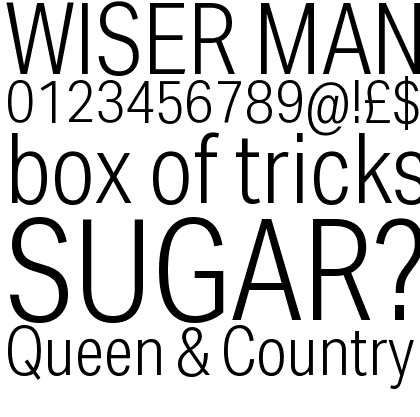

In 2001 Lange helped Berthold complete the AG series with the additions of AG light italic, Super Italic, light condensed, condensed, medium condensed, extrabold italic, light extended italic, extended italic and medium extended italic. Lange was instrumental in developing the Akzidenz-Grotesk program at Berthold in the 1950s and 1960s. The font family is made up of 51 fonts including nine weights in. The Aktiv Grotesk family is a 21st century interpretation of a grotesque sans typeface. Released in 1957 in the footsteps of Akzidenz Grotesk, Neue Haas Grotesk is essentially Helvetica before the digital age: they share the same typographical DNA. Under the direction of Günter Gerhard Lange, Berthold added AG Medium Italic (1963), AG ExtraBold (1966), AG Italic (1967), AG ExtraBold Condensed & Italic (1968), AG Super (1968). Neue Helvetica uses a numerical design classification scheme, like Univers.

In the 1950s Günter Gerhard Lange, then art director at Berthold, began a project to enlarge the typeface family, adding a larger character set, but retaining all of the idiosyncrasies of the 1898 face. The Theinhardt foundry later merged with Berthold and also supplied the regular, medium and bold weights.

It has been described as a 'Helvetica killer.' The designers of Aktiv Grotesk wanted to create something in between Helvetica and Univers by removing the quirks from Helvetica and adding a bit of warmth to Univers. Akzidenz indicates its intended use as a. Aktive Grotesk is a grotesque sans-serif typeface released through Dalton Maag in 2010. Originally named “Accidenz-Grotesk” the design originates from Royal Grotesk light by royal type-cutter Ferdinand Theinhardt. Akzidenz-Grotesk is a sans-serif typeface family originally released by the Berthold Type Foundry of Berlin. Berthold first published Akzidenz-Grotesk in 1898.


 0 kommentar(er)
0 kommentar(er)
